- عنوان کتاب: The Teacher Toolkit Guide to Memory
- نویسنده: Patrice M. Bain
- حوزه: تدریس
- سال انتشار: 2022
- تعداد صفحه: 177
- زبان اصلی: انگلیسی
- نوع فایل: pdf
- حجم فایل: 1.27 مگابایت
به عنوان مربی، ما سال ها را در برنامه های آماده سازی معلم و توسعه حرفه ای با تمرکز بر نحوه تدریس خود صرف می کنیم. با این حال، چند نفر از ما تشویق شدهایم این سؤال را بپرسیم: «چگونه یاد بگیریم؟» این سؤال جدیدی نیست. در واقع در بسیاری از فرهنگ ها و زبان ها این سوال مطرح شده است. اگرچه پاسخ ها متفاوت است، یک رشته مشترک به توانایی بازیابی دانش ذخیره شده در حافظه ما اشاره دارد. به گفته سیسرو (حدود 106–46 پ. برای معلمان تا حدودی جدید است؟ من با راس مکگیل موافقم که میگوید «همه معلمان باید از تحقیق آگاه باشند.» آینده حرفه ما در روشهایی است که – توسط علم – برای دستیابی به نتایجی که برای دانشآموزان خود میخواهیم اثبات شده است. راهنمای کیت ابزار معلم برای حافظه با به اشتراک گذاشتن چگونگی و چرایی یادگیری و حافظه، ما را به آن آینده تقویت می کند. وقتی مفاهیم و سوالاتی مانند تفاوت بین حافظه کاری و بلندمدت دانش آموزانمان را درک کنیم، معلم بهتری هستیم. نورون ها و سیناپس ها چه ارتباطی با یادگیری خود دارند؟ چگونه بازیابی و بازیابی فاصله ای، حفظ دانش را تقویت می کند؟ کدگذاری دوگانه، تکه تکه کردن، منحنی فراموشی، تئوری بار شناختی… همه اینها در این کتاب آمده است و آماده است تا به ما در تقویت یادگیری در کلاس های درس کمک کند. درک علم یادگیری ما را معلمان بهتری می کند. همانطور که دانیل ویلینگهام (2017) در کتاب خود، چرا دانش آموزان مدرسه را دوست ندارند؟ بیان می کند، “آموزش و پرورش ذهن های بهتری را ایجاد می کند، و دانش ذهن می تواند آموزش بهتری را ایجاد کند.” برای مدت طولانی، برنامه های آماده سازی معلم و توسعه حرفه ای سنگین بوده است. با تئوری های مد و آموزش مبتنی بر حکایت ها به جای شواهد قابل اندازه گیری و تکرار. اگرچه عصبشناسیهای مختلف (مانند «سبکهای یادگیری» و تواناییهای متفاوت مغز چپ/راست مغز) سالها پیش رد شدند، نوشتن آموزشی و توصیههای مبتنی بر ایدههای اثباتنشده مشابه هنوز رایج است. از سوی دیگر، تحقیقاتی که قبلاً در مجلات علمی پنهان شده بودند، در دسترس هستند. معلمان در سراسر جهان در حال یافتن، بحث و استفاده از شیوه های گردآوری شواهد هستند. تا همین اواخر، بیشتر تحقیقات در مورد چگونگی یادگیری دانش آموزان در محوطه های دانشگاهی با دانشجویان انجام می شد. در سال 2006، در ایالات متحده، دانشمندان علوم شناختی مطالعاتی را در مورد چگونگی یادگیری کودکان در کلاس های درس ابتدایی و متوسطه آغاز کردند. وقتی دانشمندان علوم شناختی از من پرسیدند که آیا می توانند نحوه یادگیری کودکان را در کلاس درس من مطالعه کنند، من از فرصت استفاده کردم. یک مدل یادگیری معتبر شامل سه مرحله است: رمزگذاری، ذخیره سازی و بازیابی. تمرکز آزمایشها در کلاس درس من بازیابی بود: چگونه دانشآموزانم حفظ مطالب خود را با روشهایی بهبود دادند که آنها را ملزم به یادآوری آنها میکرد. راهنمای راس مک گیل برای حافظه هم ذخیره سازی و هم بازیابی را پوشش می دهد. او علم را می گیرد و آن را برای معلمان «به روشی که برای کلاس های درس و دانش آموزانشان کار می کند» به عمل می آورد.
As instructors, we spend years in teacher preparation programmes and professional development focusing on how we teach. Yet how many of us have been encouraged to ask the question, ‘How do we learn?’ It is not a new question. In fact, it has been asked in many cultures and languages. Although answers vary, a common thread refers to the ability to retrieve knowledge stored in our memory. According to Cicero (circa 106–46 BCE), ‘Memory is the treasury and guardian of all things.’ If the importance of memory has been acknowledged for over 2,000 years, how is it that understanding how to get information into memory is a field somewhat new to teachers? I agree with Ross McGill when he advocates, ‘All teachers must be research-informed.’ The future of our profession lies in methods proven – by science – to achieve the results we want for our students. The Teacher Toolkit Guide to Memory boosts us into that future by sharing the how and why of learning and memory. We are better teachers when we understand concepts and questions such as the difference between our students’ working and long-term memory. What do neurons and synapses have to do with their learning? How do retrieval, and spaced retrieval, strengthen knowledge retention? Dual coding, chunking, the forgetting curve, cognitive load theory… it’s all here in this book, ready to help us boost learning in our classrooms. Understanding the science of learning makes us better teachers. As Daniel Willingham (2017) states in his book, Why Don’t Students Like School?, ‘Education makes better minds, and knowledge of the mind can make better education.’ For too long, teacher preparation programmes and professional development have been burdened with fad theories and pedagogy based on anecdotes rather than measurable, replicable evidence. Although various neuromyths (such as ‘learning styles’ and differing left-brain/right-brain abilities) were debunked years ago, education writing and advice based on similar unproven ideas are still prevalent. On the other hand, research that previously had been tucked away in scientific journals is becoming accessible. Teachers around the world are finding, discussing and using evidence-gathered practices. Up until recently, most research studying how students learn was conducted on college campuses with college students. In 2006, in the United States, cognitive scientists began studies on how children learn in primary and secondary school classrooms. When I was asked by cognitive scientists if they could study how children learn in my classroom, I jumped at the opportunity. A well-respected model of learning includes three steps: encoding, storage and retrieval. The focus of experiments in my classroom was retrieval: how my students improved their retention of material by methods requiring them to recall it. Ross McGill’s Guide to Memory covers both storage and retrieval. He takes the science and translates it for teachers ‘into practice, in a way that works for their classrooms and their students’.
این کتاب را میتوانید از لینک زیر بصورت رایگان دانلود کنید:
Download: The Teacher Toolkit Guide to Memory






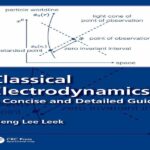
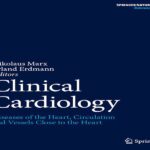

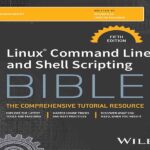
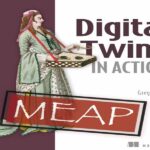




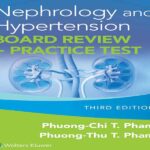



















نظرات کاربران